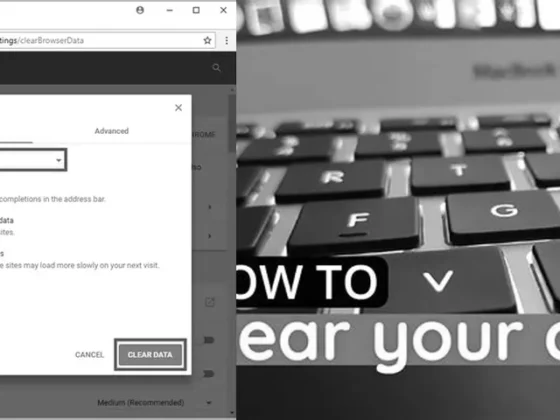What Does Alt F4 Do? Exploring the Hidden Powers of the Alt+F4 Keyboard Shortcut – Are you tired of searching through multiple menus just to close an application? Well, look no further! In this blog post, we will uncover the hidden gem of keyboard shortcuts – Alt+F4! Yes, you heard it right. Alt+F4 is the secret weapon that can quickly close any application with just a simple keystroke. So, whether you’re a tech-savvy individual or a casual computer user, get ready to unleash the power of Alt+F4 and take your computing experience to a whole new level. Get ready to say goodbye to the hassle of hunting down that tiny ‘X’ button, because Alt+F4 is here to save the day!
Understanding the Alt+F4 Keyboard Shortcut
In the realm of keyboard shortcuts, Alt+F4 holds a prominent place for its efficiency and effectiveness. This simple yet powerful shortcut is like a digital Swiss Army knife for closing programs, but it’s essential to understand its nuances to use it effectively.
How Alt+F4 Functions Across Different Applications
When you’re in the midst of using a Windows-based computer, the Alt+F4 command is your go-to maneuver for shutting down an active window. Whether it’s a document in Microsoft Word, an Excel spreadsheet, or an unsolicited program that popped up unexpectedly, pressing Alt+F4 will promptly close the application that’s currently in the spotlight on your screen.
Remember, Alt+F4 will not close everything on your computer; it is designed to close only the active window you are working on.
Alt+F4 vs. Ctrl+F4: Understanding the Difference
It’s easy to confuse Alt+F4 with Ctrl+F4, given the proximity of the keys and their related functions. However, they serve different purposes. While Alt+F4 closes the entire application, Ctrl+F4 has a softer approach—it closes the current tab or window within the application. If you have multiple documents open in Adobe Photoshop, for example, Ctrl+F4 will close the active document but leave Photoshop running.
Alt+F4 and Web Browsing
For web surfers, Alt+F4 can be both a blessing and a curse. If you’ve ever accidentally closed your browser with multiple tabs open, you’ve felt the sting of Alt+F4’s power. Pressing Alt+F4 while browsing will close not just the current tab but the entire browser, including all its tabs. It’s a quick way to declutter your desktop, but be sure you’re ready to say goodbye to all open sites.
Is Alt+F4 Good to Use?
Using Alt+F4 is generally safe and an efficient way to close programs. It sends a signal to the application to terminate gracefully, giving it a chance to save your work or ask if you need to save before closing. However, if an application is unresponsive, Alt+F4 might not work, and you might need to force quit the application using Control+Alt+Delete to access the Task Manager.
When to Use Alt+F4
Alt+F4 is handy when you want to quickly exit out of an application without going through the process of clicking through menus. It’s also beneficial when an application becomes unresponsive, and you need to close it to restart it.
Precautions When Using Alt+F4
Before you use Alt+F4, ensure you’ve saved your work. If you’re working on an unsaved document, most programs will prompt you to save before closing, but it’s not a guarantee. Always save your work frequently to avoid losing progress.
Alternative Methods to Close Applications
Using Task Manager to Force Quit
When an application is not responding to commands, including Alt+F4, the Task Manager is your next line of defense. You can access it by pressing Control+Alt+Delete and then selecting Task Manager from the options. From there, you can end tasks that are not responding.
The Role of Alt+F4 in Modern Computing
Alt+F4 continues to be a relevant tool in modern computing for its simplicity and effectiveness. While there are other methods to close applications, such as using the Task Manager or clicking the ‘X’ at the top right of a program, Alt+F4 remains a quick and keyboard-friendly option.
Enhancing Productivity with Keyboard Shortcuts
Keyboard shortcuts like Alt+F4 are designed to streamline your workflow and save you time. In a world where efficiency is paramount, knowing these shortcuts can significantly enhance your productivity.
Other Useful Keyboard Shortcuts
- Ctrl+C: Copy the selected item.
- Ctrl+V: Paste the copied item.
- Ctrl+B: Bold the selected text.
- Ctrl+Z: Undo an action.
- Ctrl+S: Save the current document or file.
Each of these shortcuts, like Alt+F4, is designed to minimize the need for mouse navigation and streamline your interactions with your computer.
Conclusion: The Utility of Alt+F4 in Daily Computing
Despite its straightforward function, Alt+F4 has a significant impact on day-to-day computer use. Its ability to quickly close applications is more than just a convenience; it’s a means of maintaining a smooth and productive computing experience. As you integrate Alt+F4 and other keyboard shortcuts into your routine, you’ll find your computer interactions becoming more efficient and enjoyable.
Remember, while Alt+F4 is a powerful tool, it is vital to use it wisely to avoid unintentionally losing unsaved work. Always save your progress before closing any program, whether through Alt+F4 or any other method. By doing so, you’ll ensure that your digital endeavors are not only efficient but also secure.
FAQ & Related Questions about Alt F4
Q: What does Alt F4 do?
A: Alt F4 is a keyboard shortcut used to close the currently active window on your computer.
Q: Does Alt F4 close everything on my computer?
A: No, Alt F4 only closes the active window. It does not close everything on your computer.
Q: How is Alt F4 different from Ctrl+F4?
A: Alt F4 closes the current window, while Ctrl+F4 closes the current window of the application you’re viewing.
Q: Is it good to use Alt F4?
A: Using Alt F4 is a convenient way to close the active window. However, it’s important to save any unsaved work before using this shortcut.
Q: What other keyboard shortcuts can I use to close applications?
A: To force quit an application, you can press Ctrl+Alt+Delete on a PC keyboard. This combination of keys allows you to close unresponsive applications, reboot the computer, log in, and perform other tasks.


